There’s old, and then there’s really old, and I’m not referring to Tony Bennett. Nope, it’s this place, the nation’s oldest continuously occupied city, starting way back in 1565! With colonial history galore, beautiful Spanish-style architecture, shopping-shopping-shopping, and lots more, St. Augustine is a jewel of a destination!
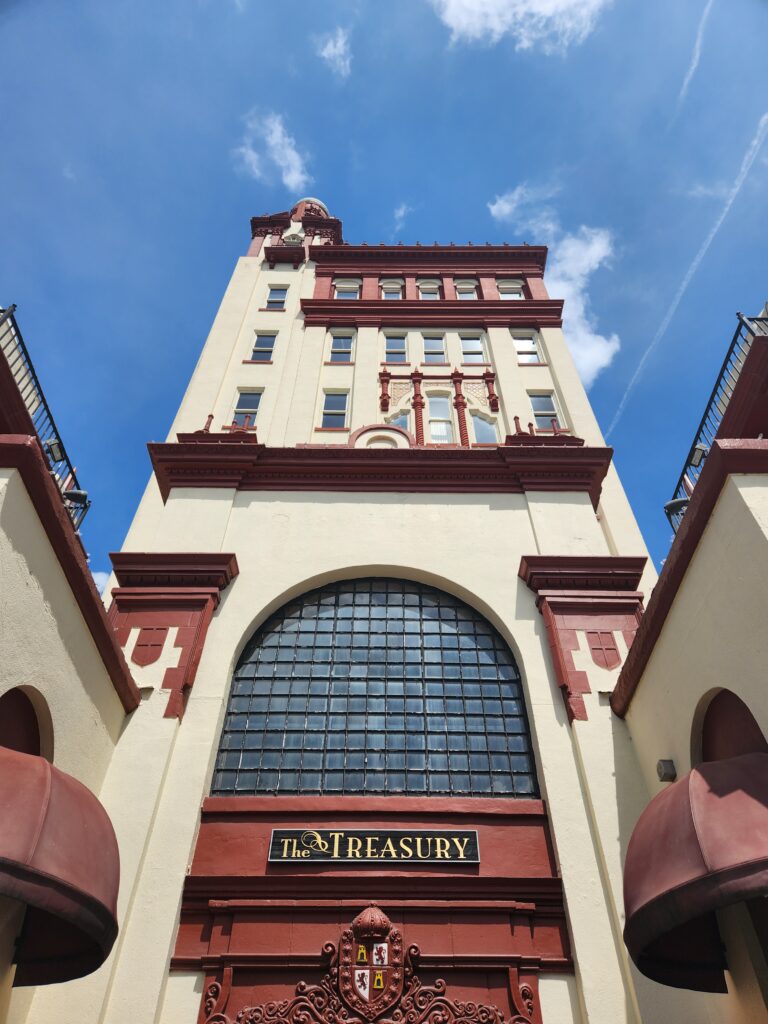
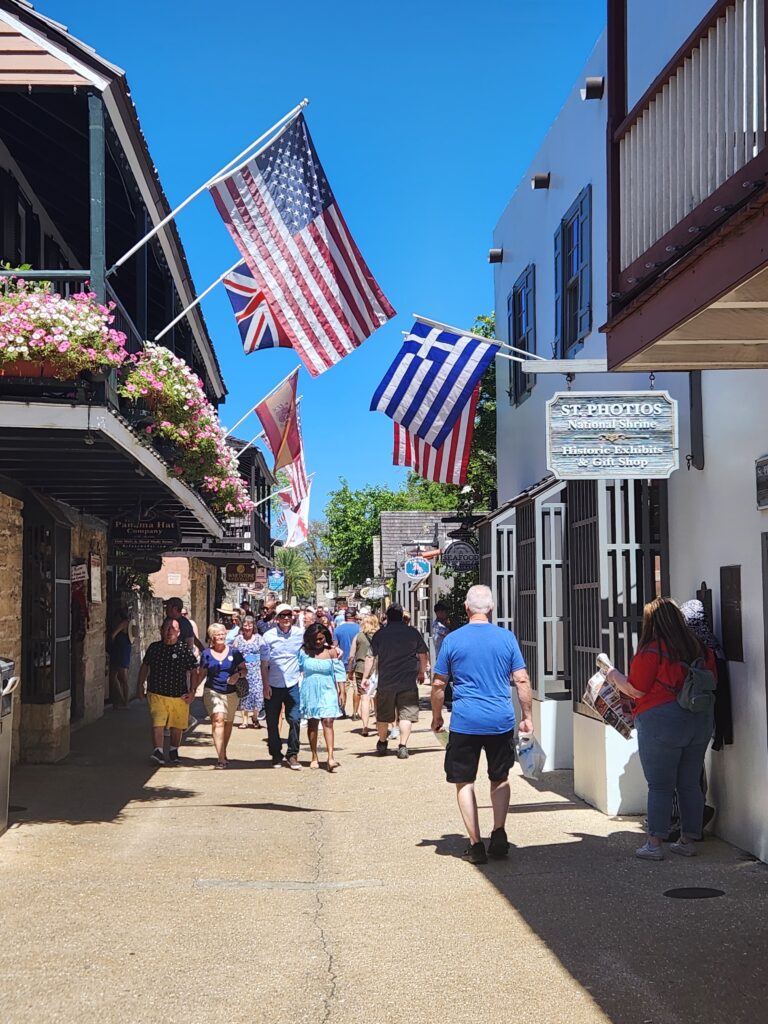
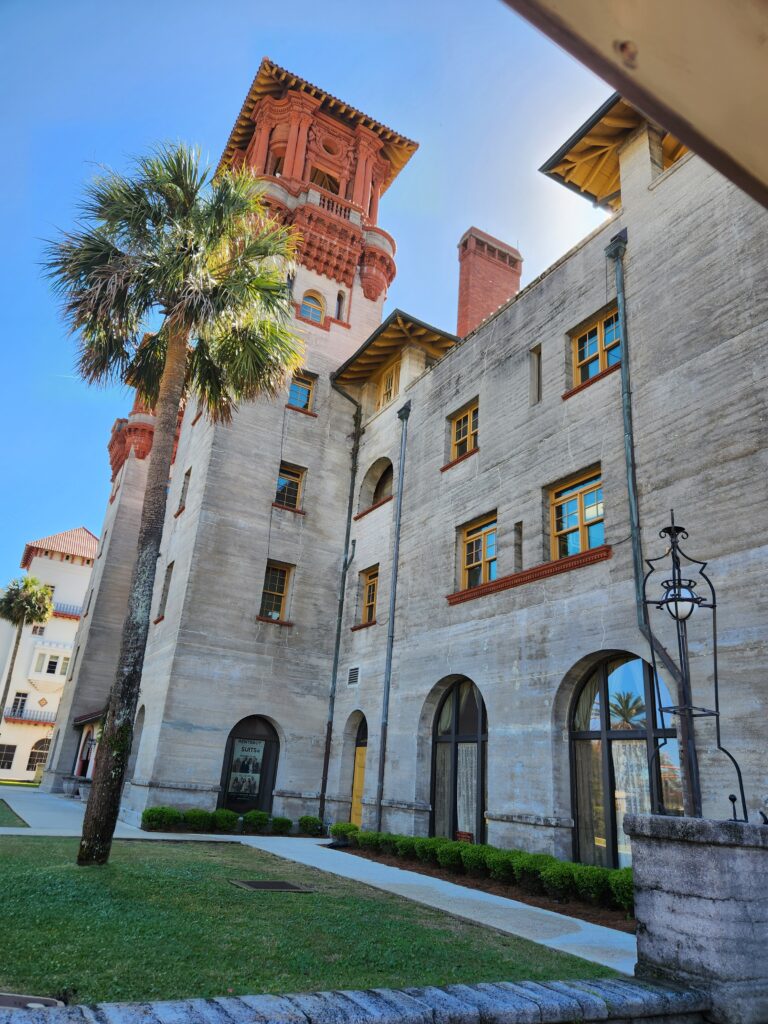
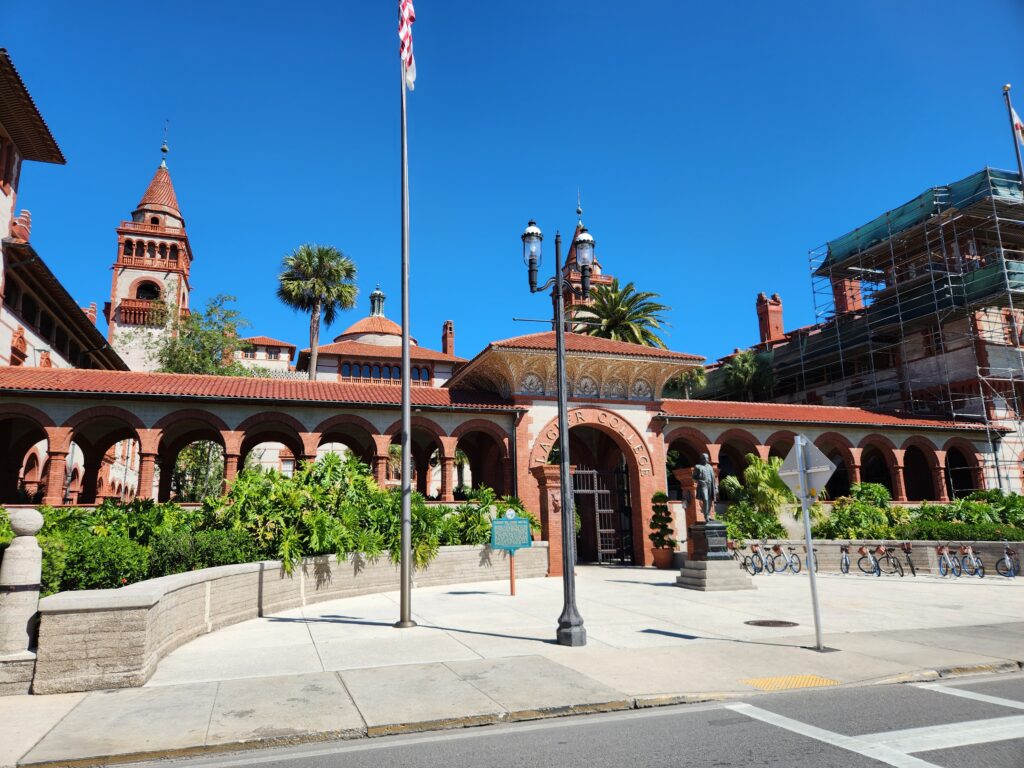
My Aunt Dotty and Uncle Brian came down from Illinois to join us, escaping the winter blahs and relishing the extensive sunshine and a built-in travel planner (that’s me! pretty much available for free to anyone who asks!).
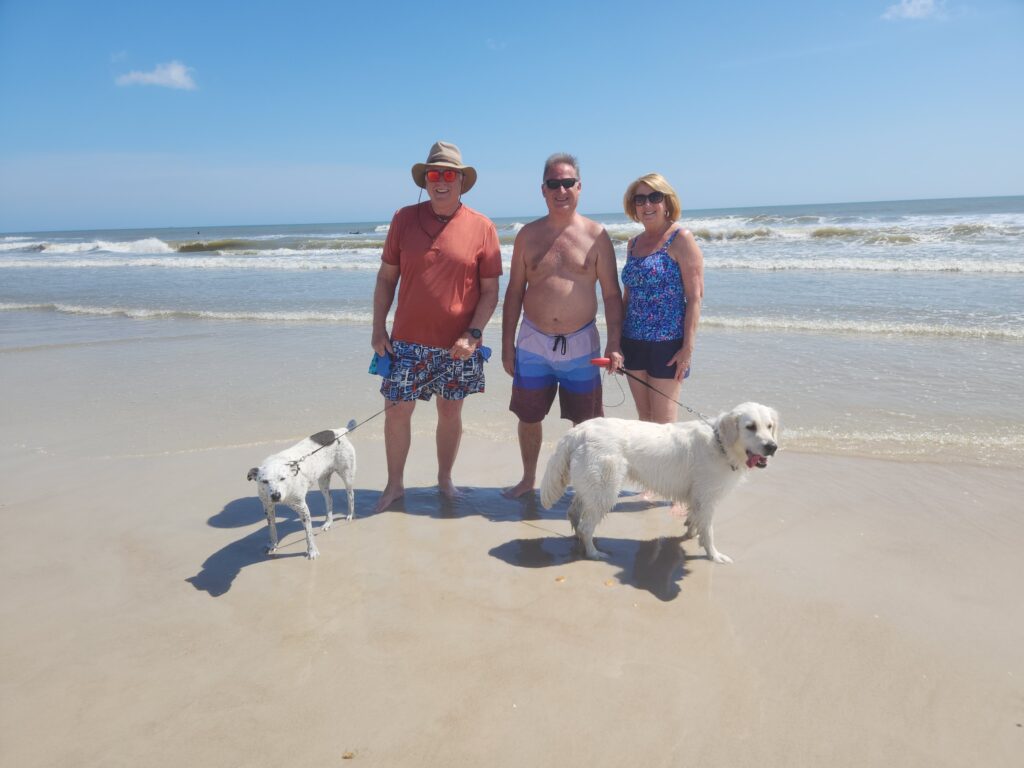
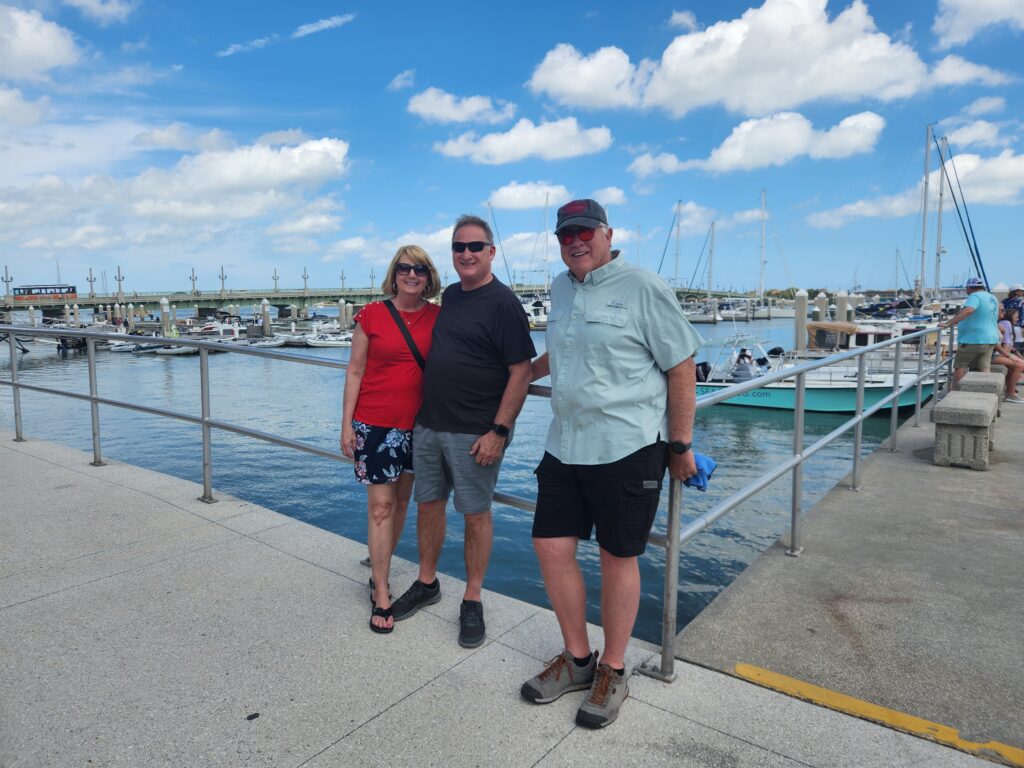
Referring back to grade school sing-alongs, “Columbus sailed the ocean blue in 1492,” but he didn’t stay long and certainly did not drop a corner grocery store when he landed. The British arrived in Jamestown, but they didn’t make it here until 1607. Therefore, the Spanish dropping a pin here in 1565 (oh, and massacre’ing the French who were already here 3 years earlier, so rude) gives them the bragging rights: St. Augustine, Florida, oldest city in the U.S.! Tah-dahhhh!
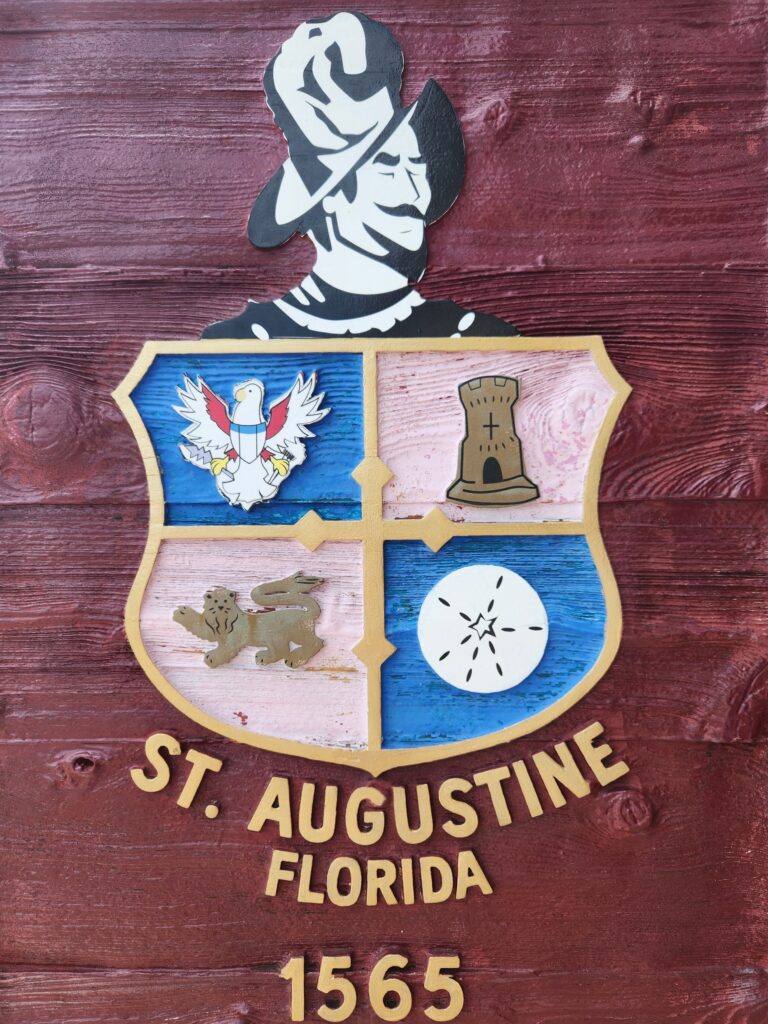
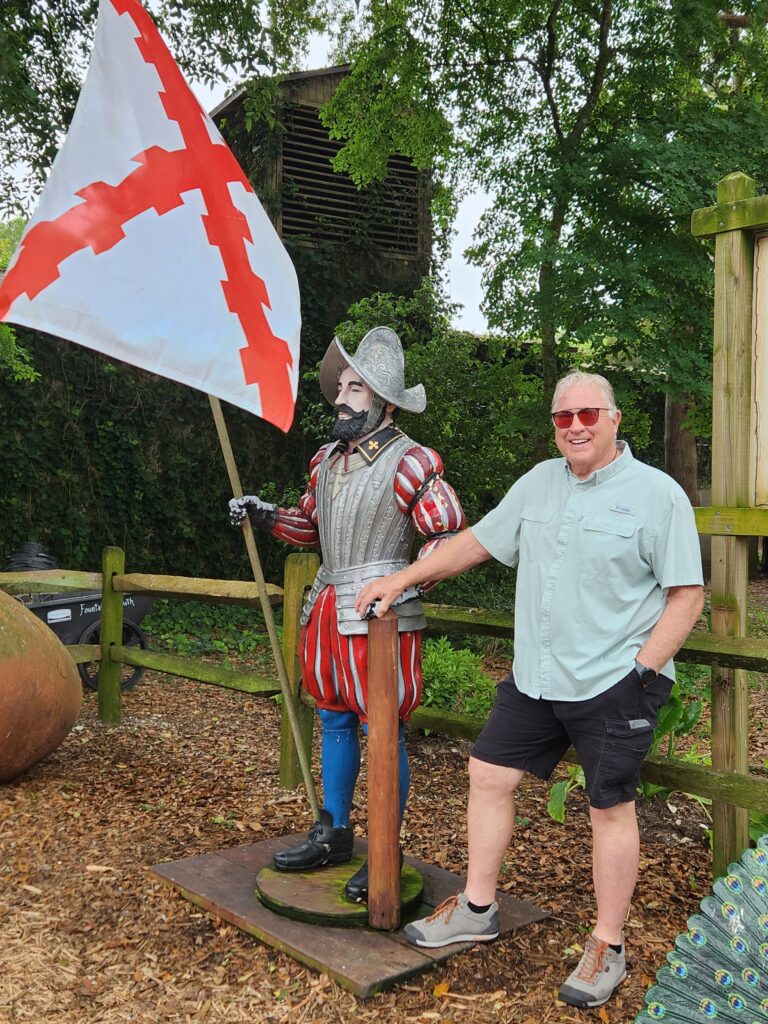
The story, and the history lesson, begin at the Fountain of Youth, a surprisingly interesting and well-done attraction that was worth the price of admission. It was at this “archealogical site,” with the dumb touristy name, that Ponce de Leon came ashore in 1513, naming the area La Florida (FLORIDA! that sounds familiar), and where in 1565 Pedro Menendez de Aviles found the city of St. Augustine. Florida, in Spanish, means “covered in flowers.”
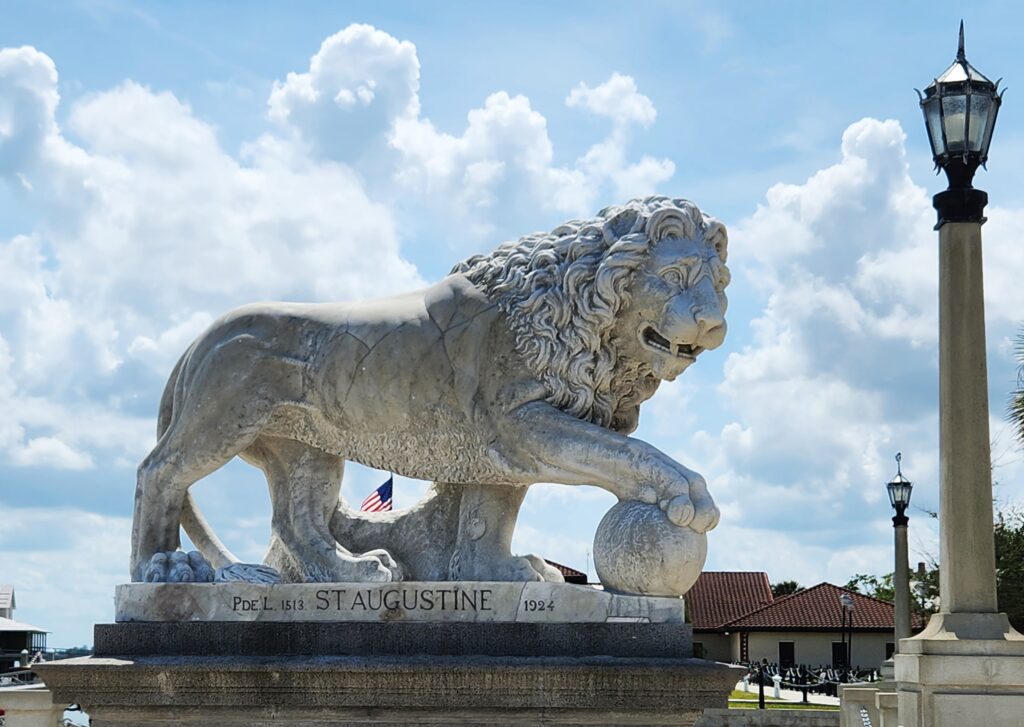
The weirdest detail of this conquest is that when Ponce proclaimed it Florida, he meant the ENTIRE United States, not just that thumb we now identify as Florida. So, for a hot minute, the entire country was called La Florida! Isn’t that surprising? If you’ve ever driven I-10 through Louisiana you might assume by its horrific condition to be the oldest street in the nation, but nope — the pretty little Aviles Street in St. Augustine wins that award.

Ponce de Leon came here to (among other reasons) search for the legendary Fountain of Youth, and since a water well discovered on this site was able to be drunk from without getting sick, it was assumed to have magical powers that would keep them young forever. Sadly, this must have worn off over the centuries, as we could find no notable improvement in our complexions, and only a sulfur-y aftertaste to show for the experience.

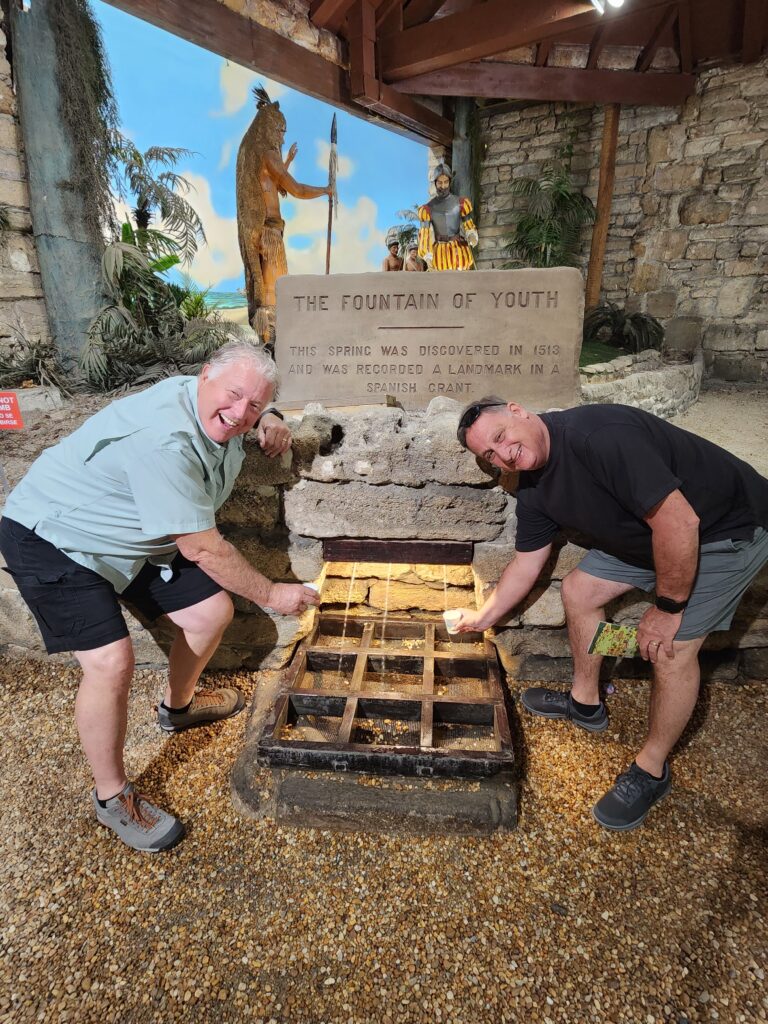
What we did find, however, were many really fun shows and re-enactments, dozens of sassy peacocks, and acres of beautiful, dog-friendly grounds to stroll.
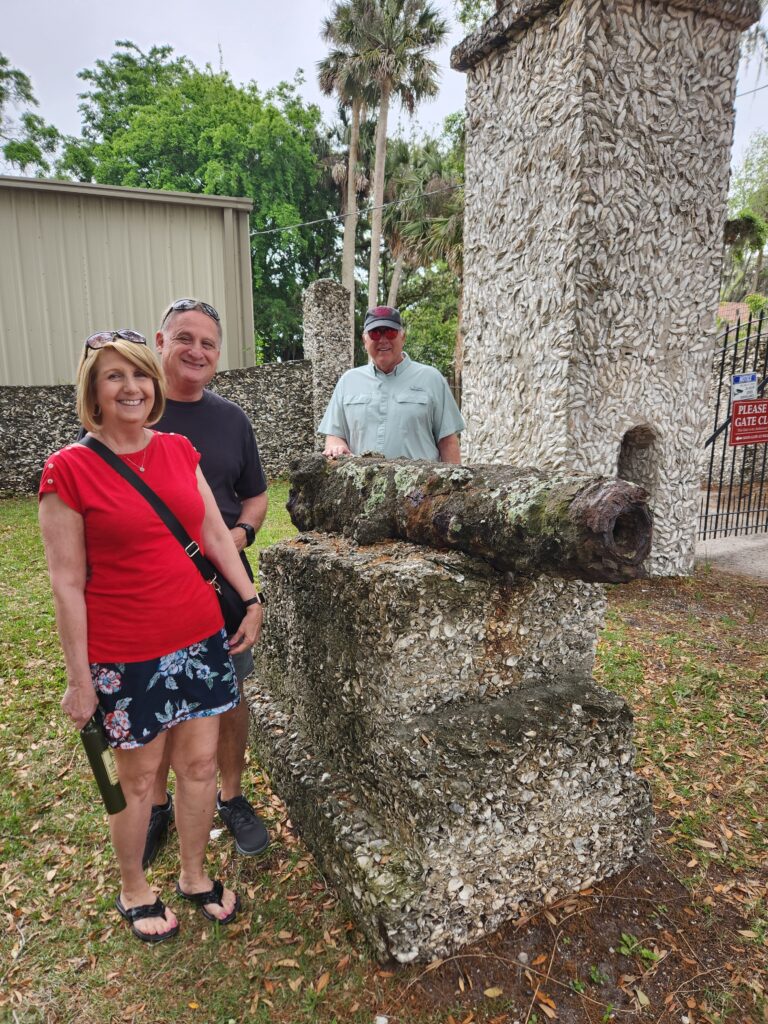
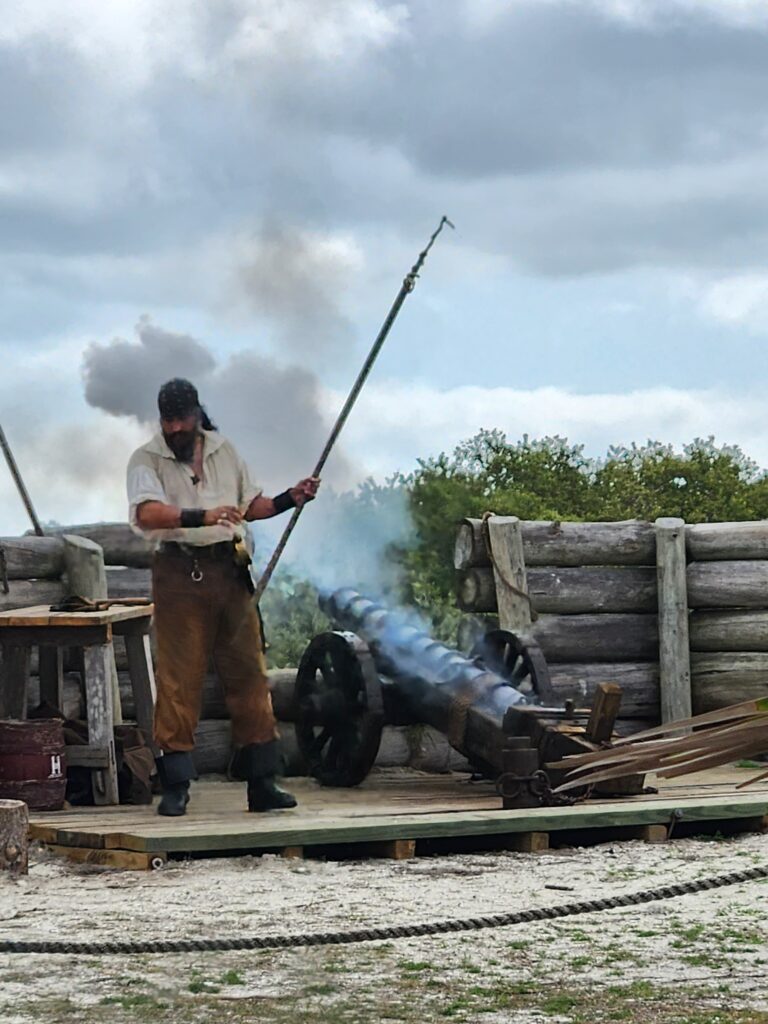

Of course, the first city has lots of firsts to take in, most of which can be toured for free or a small fee: first schoolhouse, first general store, first permanent Christian church, first street, first legally-sanctioned free black street, first jail (built to look like a hotel from the street), etc etc etc … you get the idea.
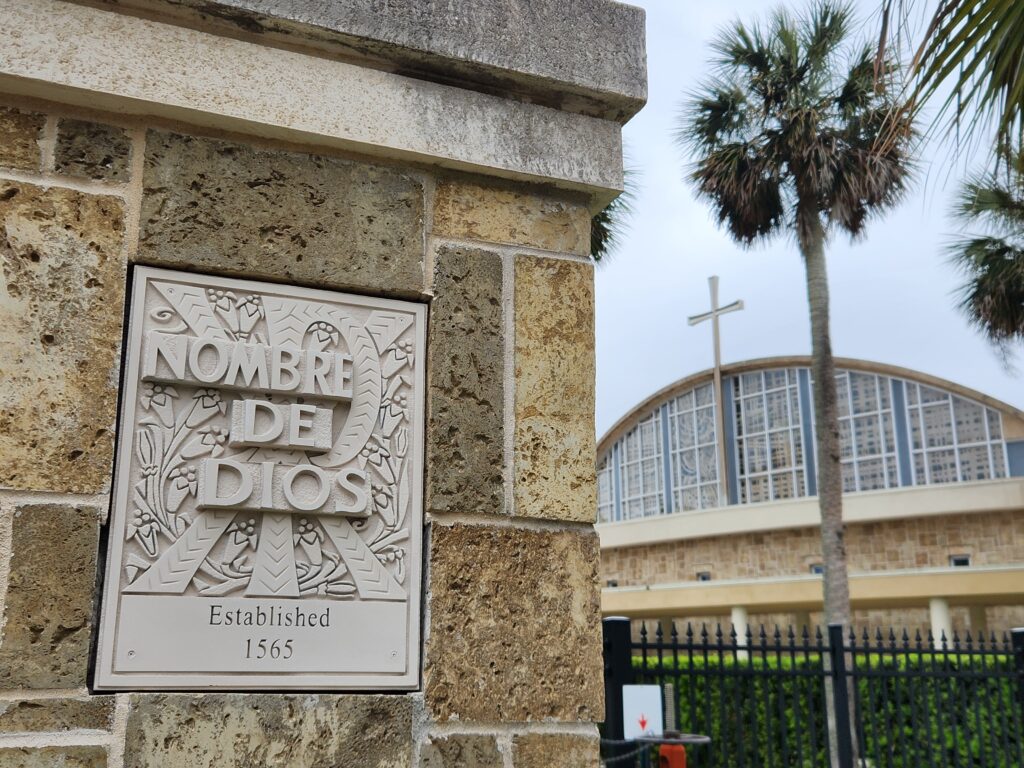
The “don’t-miss” first-something in St. Augustine is the first masonry fort in the U.S., Castillo de San Marcos. Building began in 1672 — more than 100 years before the U.S. became a country! — but it wasn’t occupied by American soldiers until 1821. Like all forts, it was built to protect inhabitants of the city from would-be attackers arriving by water. It looks small from below, but huge from up above, where you can walk on the top of the walls.
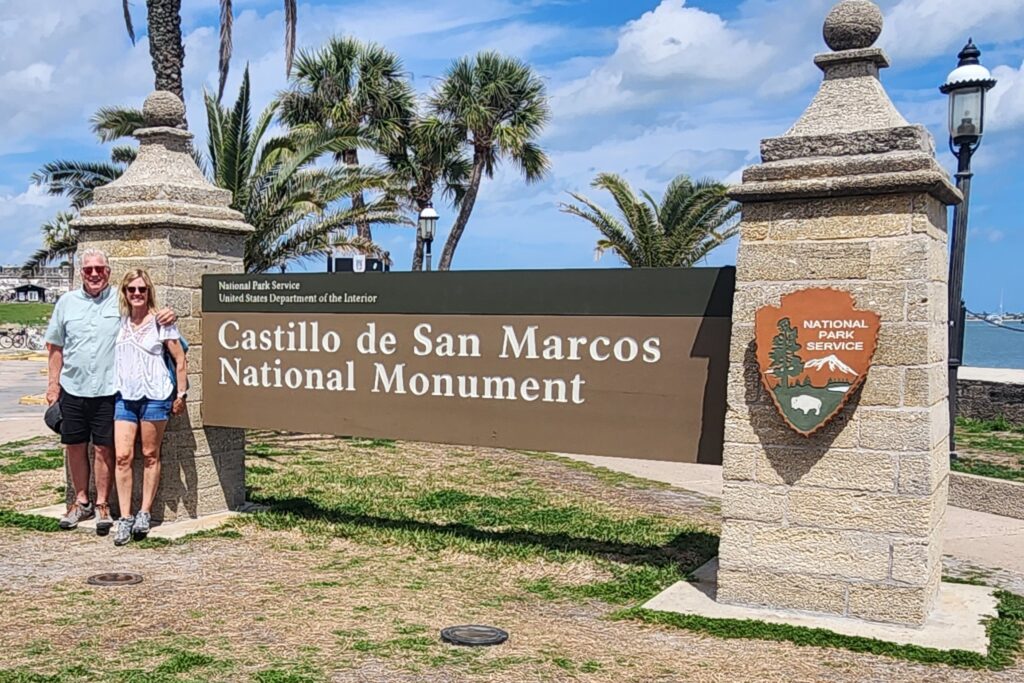

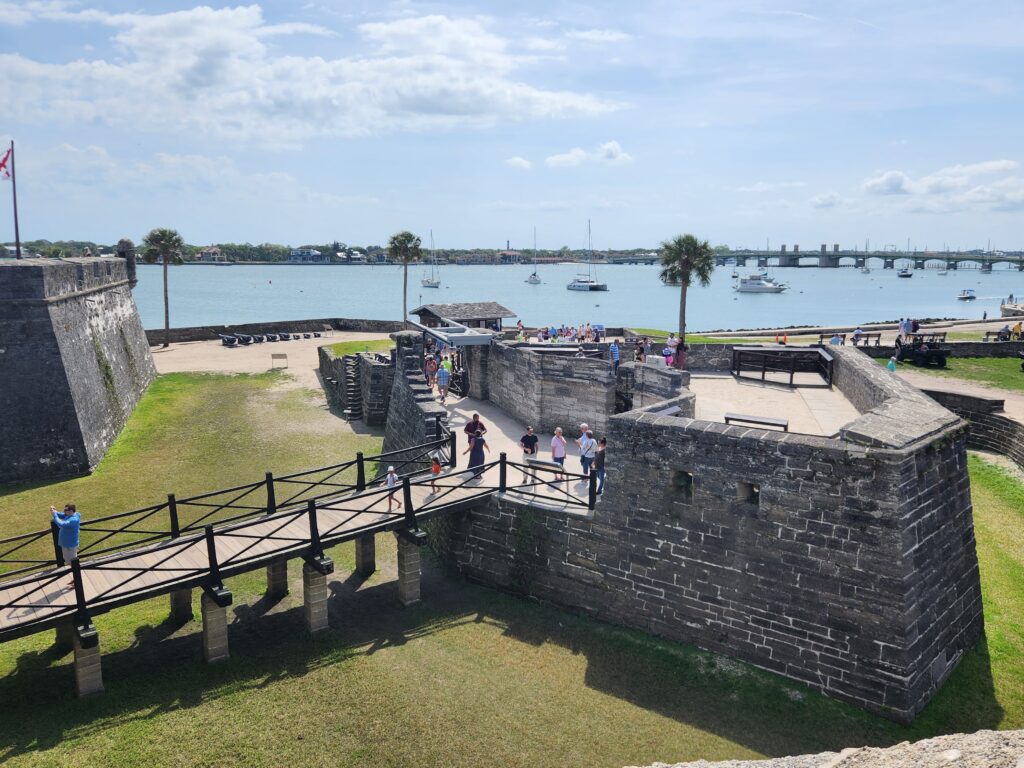
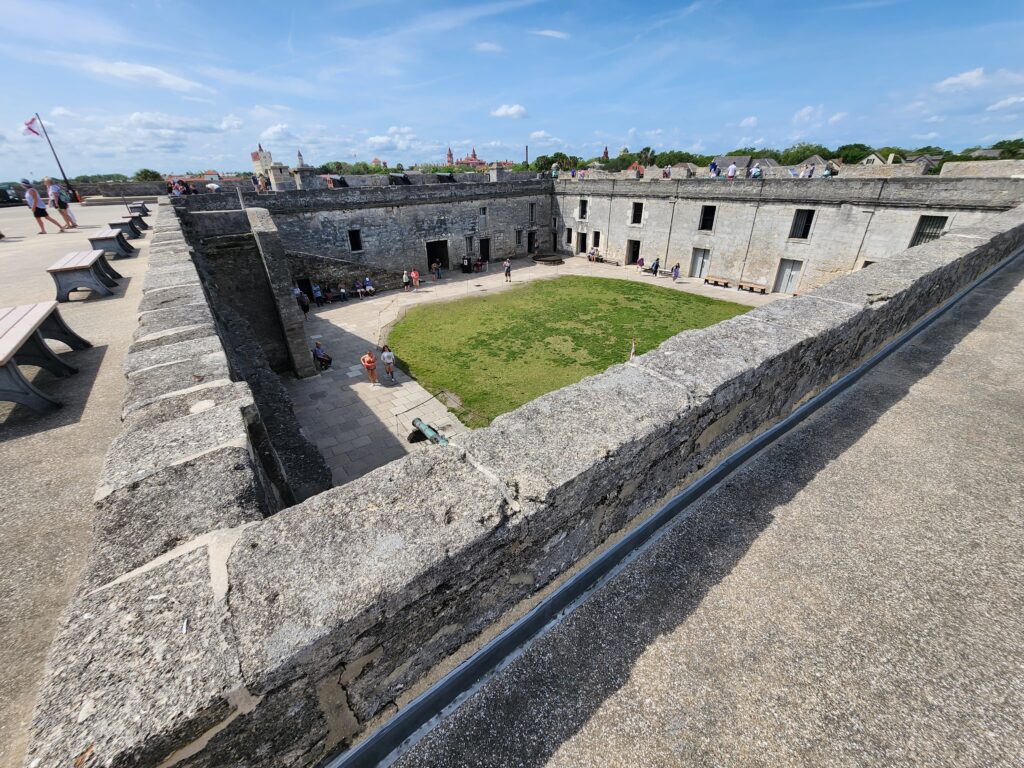
The entire fort was built from coquina, which is Spanish for “little shell.” Basically, and I’m simplifying here, these teeny tiny seashells would get washed on top of other teeny tiny seashells, and then the ocean would pound them together, and besides THAT, the shells would ooze this glue-like substance and stick together. Fast forward thousands of years, settlers could mine enormous coquina fields from the ocean and cut them into blocks to build things … really strong things. Like forts!

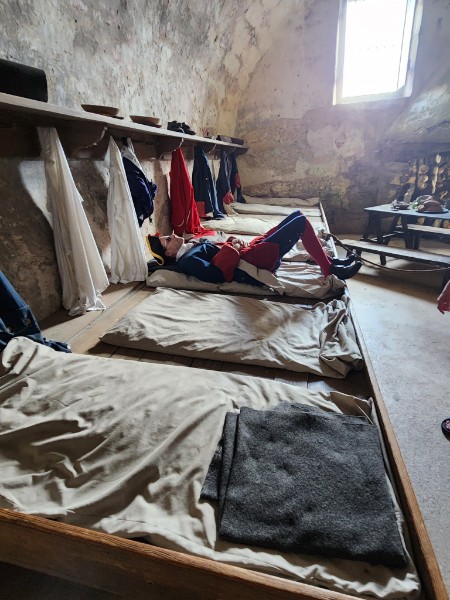
Drawbridge, check. Moat, check. Cannons, check. All the things a successful army needs to defend itself from water-borne assailants, check. They also lined the edges of the city with rows of palm tree trunks, cuz ya gotta work with what ya got, and in Florida, boy do they got palm trees.

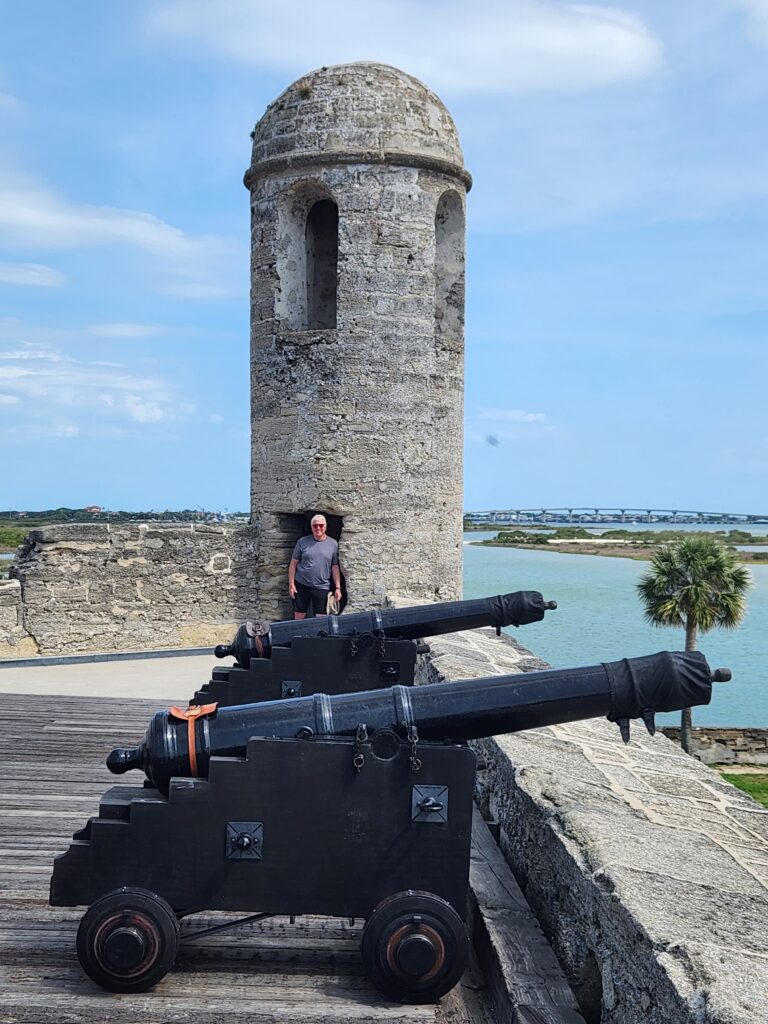

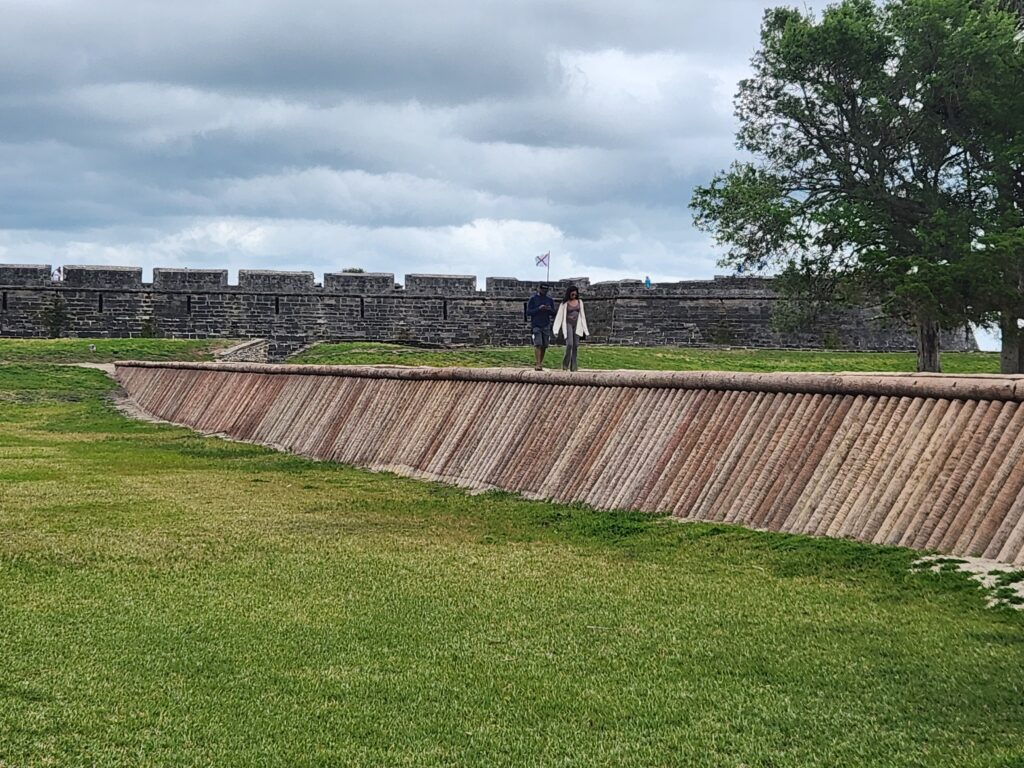
We expected to buzz through the Castillo in 15 minutes, and ending up spending hours on their terrific exhibits and live presentations. Back outside the fort, romantic ambiance and old-world charm, all yours, just inside these city gates, or heading toward nearby Anastasia Island.
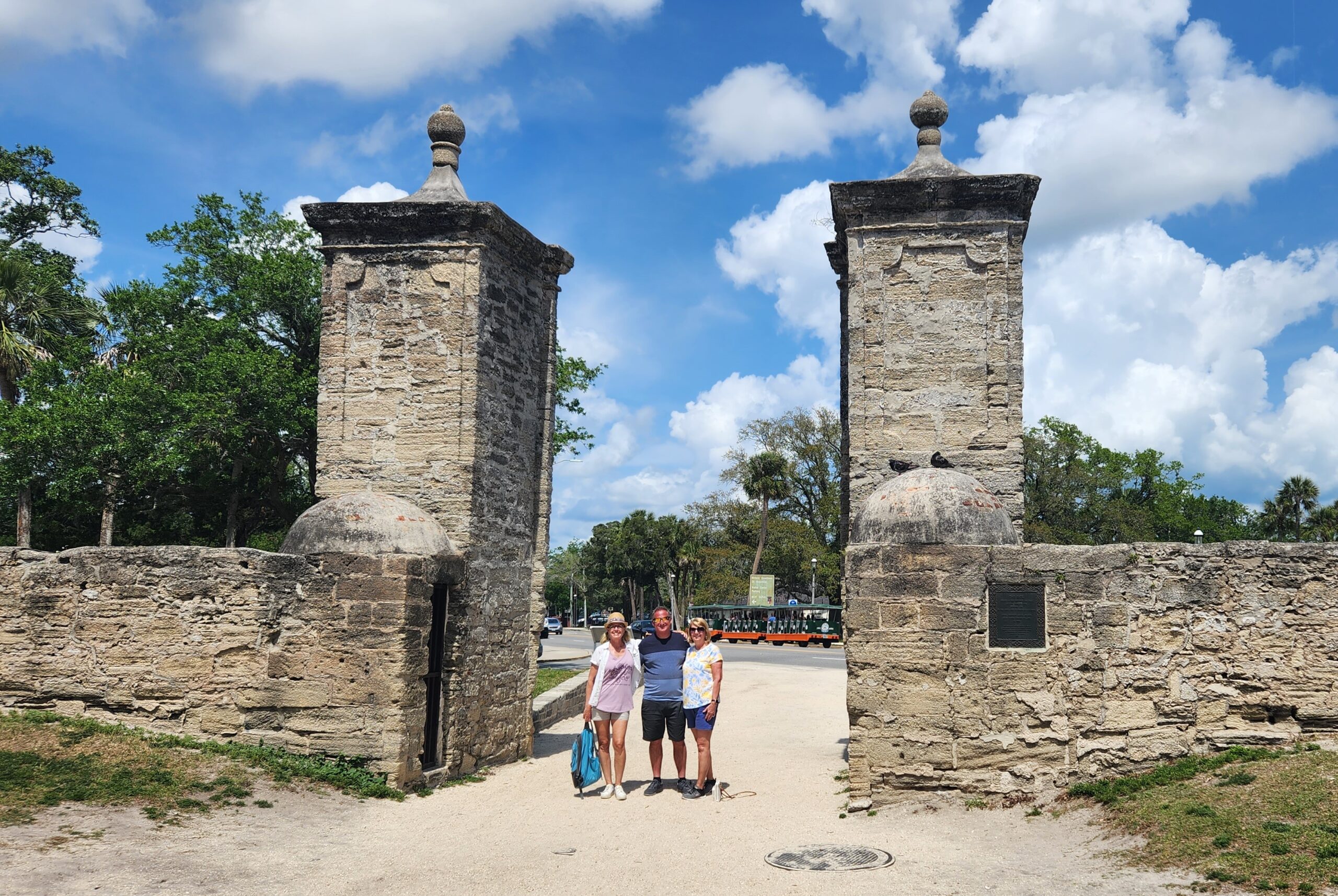
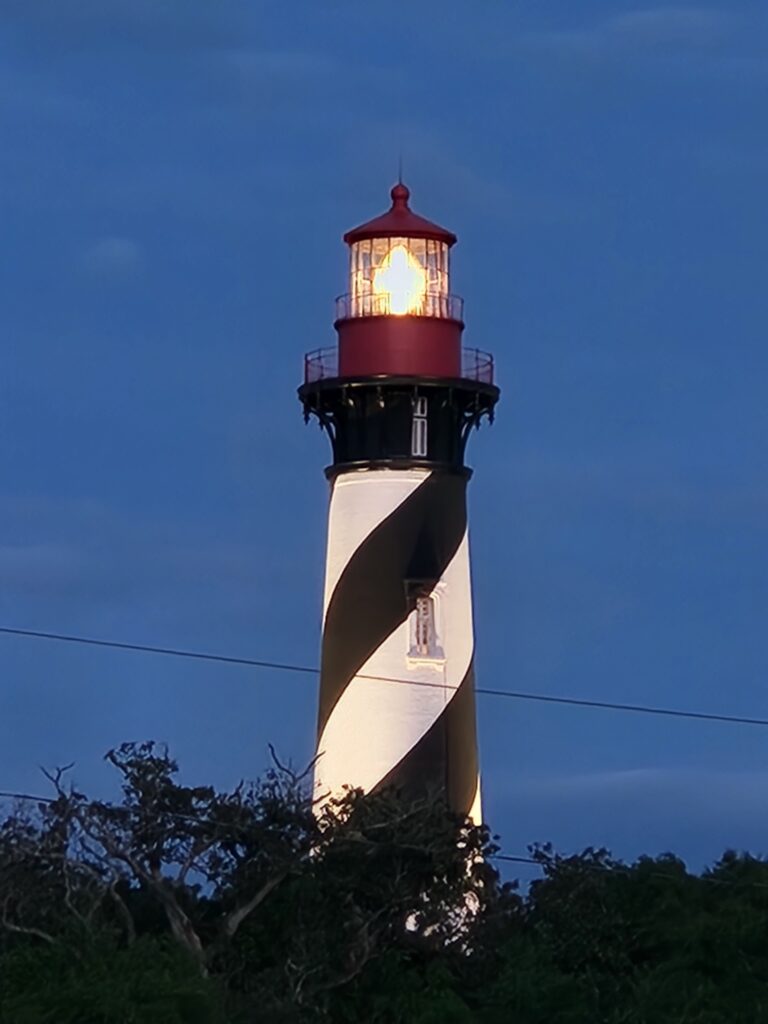
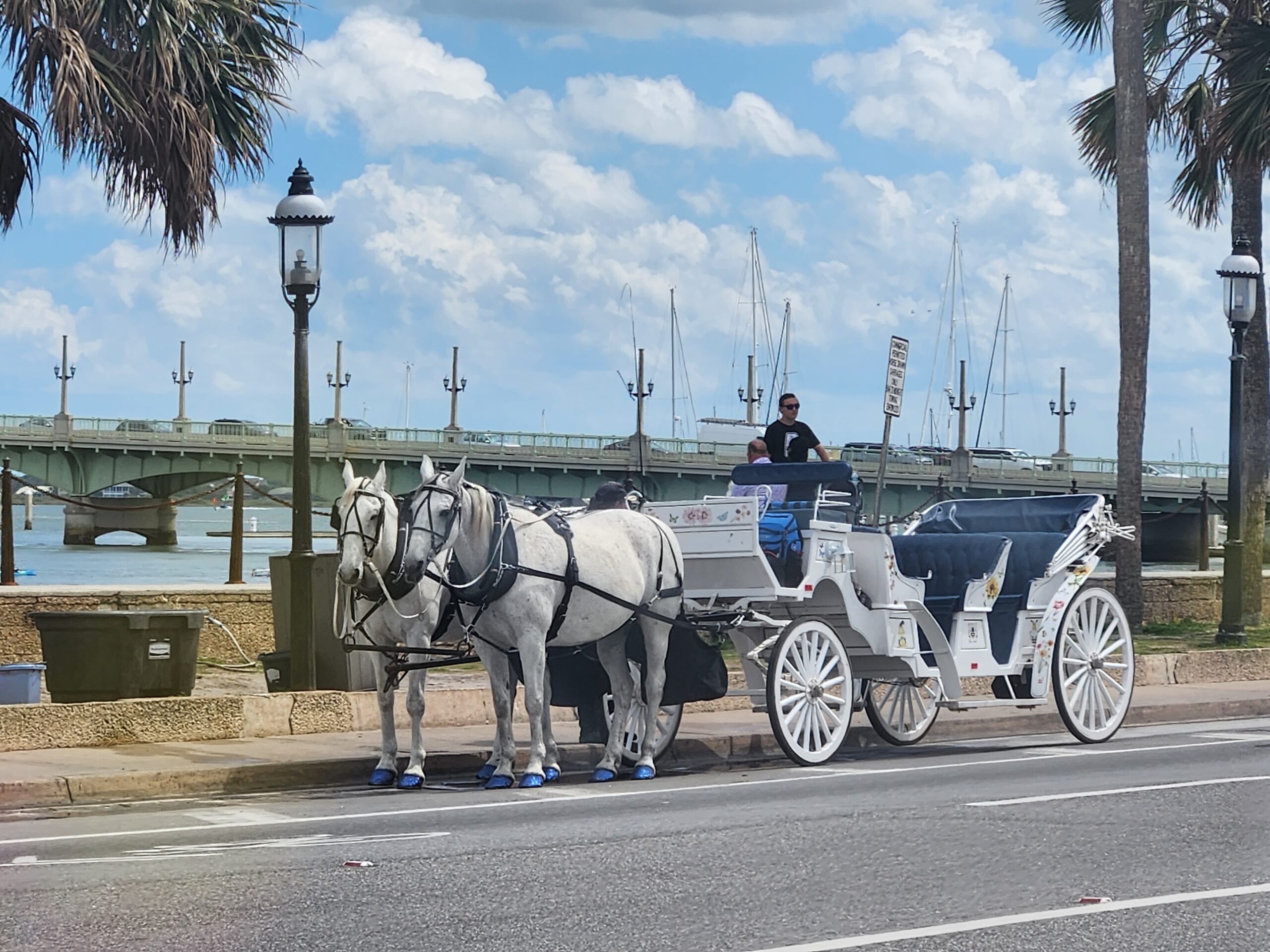
Come hungry, or don’t come at all! O.C. White’s (housed in a building dating back to 1790) for seafood, Casa Reina for Mexican, fresh churned ice cream at Mayday, gourmet popsicles in 40+ flavors at Hyppo, spirit tasting in the cute St. Augustine Distillery, and amazing Southern food in a converted historic warehouse called Ice Plant were just a few of our faves. We also made personal pizza pies at the RV in our Ooni Pizza Oven. Diet starts … tomorrow.
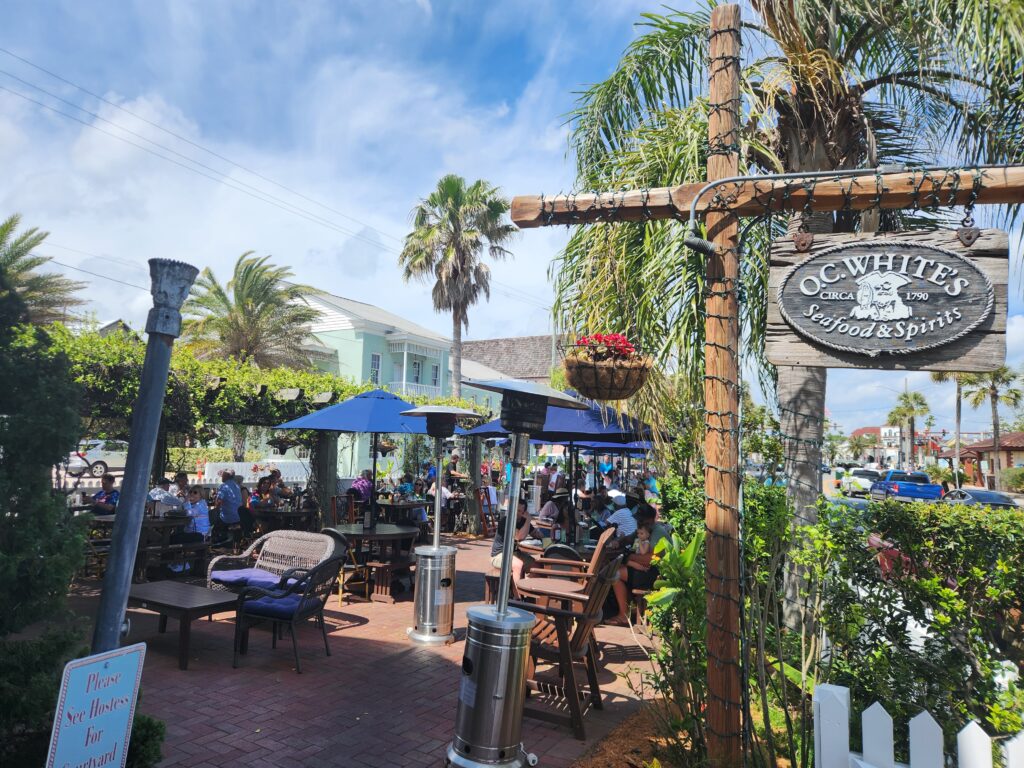


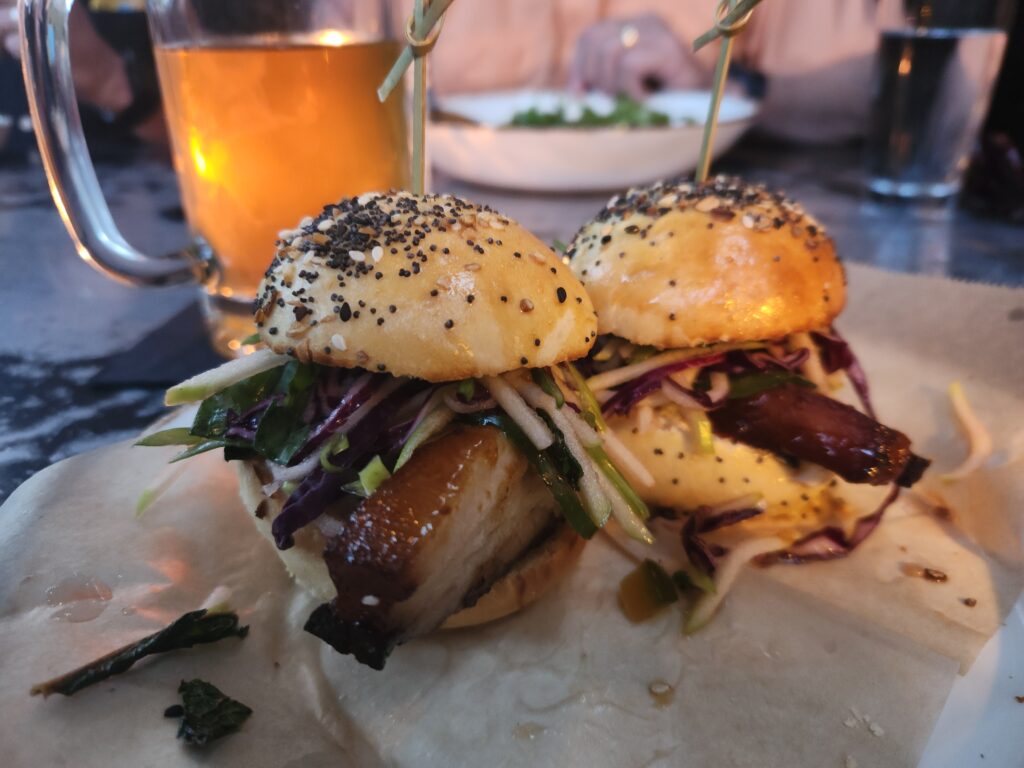
We involved Dotty and Brian in our new favorite sport of Duck Duck Jeep. Started in Canada during the pandemic to bring a smile to a stranger, this game involves Jeep owners anonymously leaving ducks on the hood of other Jeeps they run across. People who get ducked usually line them up on their dash in what is called the “duck pond.”

We now carry a few ducks everywhere we go, though our Jeep tow vehicle has only been ducked once so far. We did “duck” one non-Jeep too, because it was a work truck for “Duck Duck Plumbing” and who could resist that?

Timucuan Preserve – Jacksonville, FL
If the historical aspects of St. Augustine interest you, you might also enjoy some of the locations in Timucuan Ecological and Historical Preserve near Jacksonville. All outdoor locations are dog-friendly and the National Park Service app has excellent related audio tours.
Fort Caroline memorializes the site where the very same Pedro Menendez de Aviles (bully that he was) stormed the short-lived settlement of French Huegenots who were just trying to live life, and massacred or drove them away, before returning back to St. Augustine to drink with his cronies and celebrate his manliness.
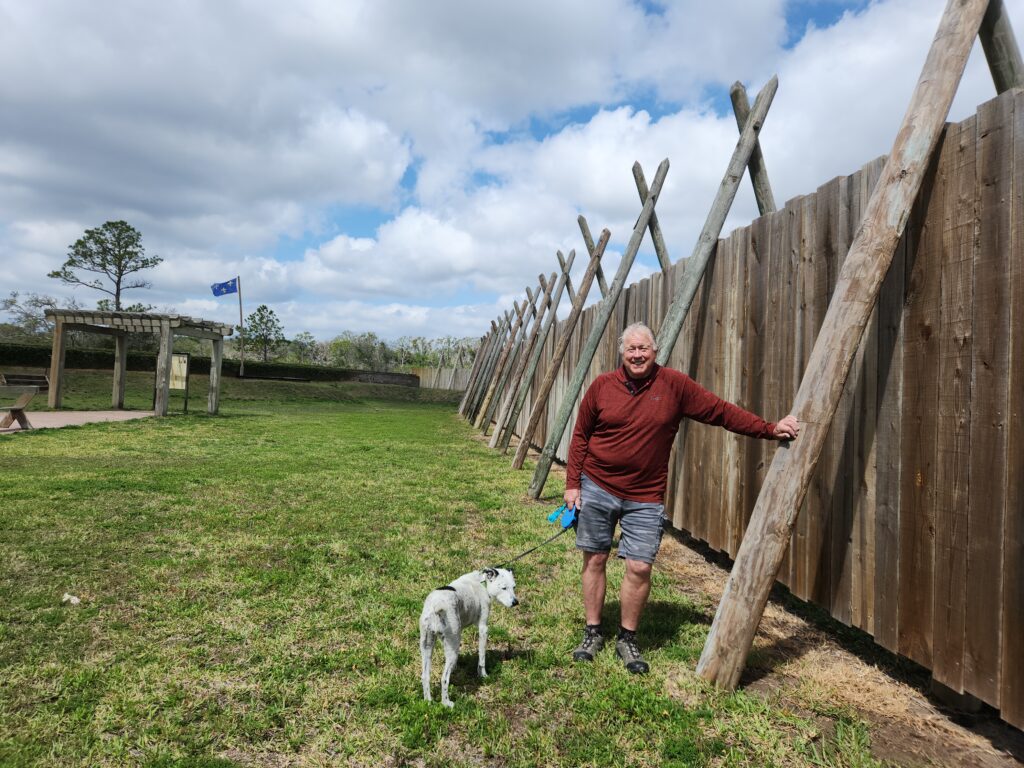
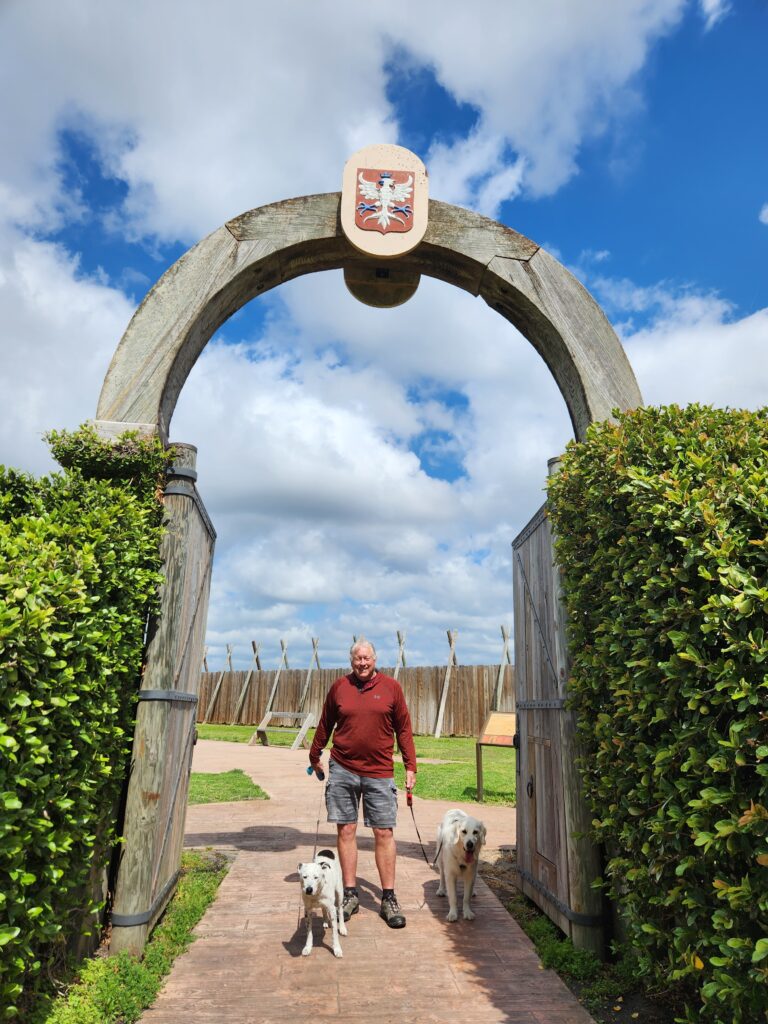
The Kingsley Plantation has a well-preserved plantation house built in 1798, and the remains of 25 slave cabins, neatly lined up in an arc, all along a wide salt march on the Fort George River. The cabins are made from tabby, which is a super labor-intensive concrete made from oyster shells, sand and water, and which is not to be confused with the other shell related material called coquina and mentioned above, if you’re a skim-reader.

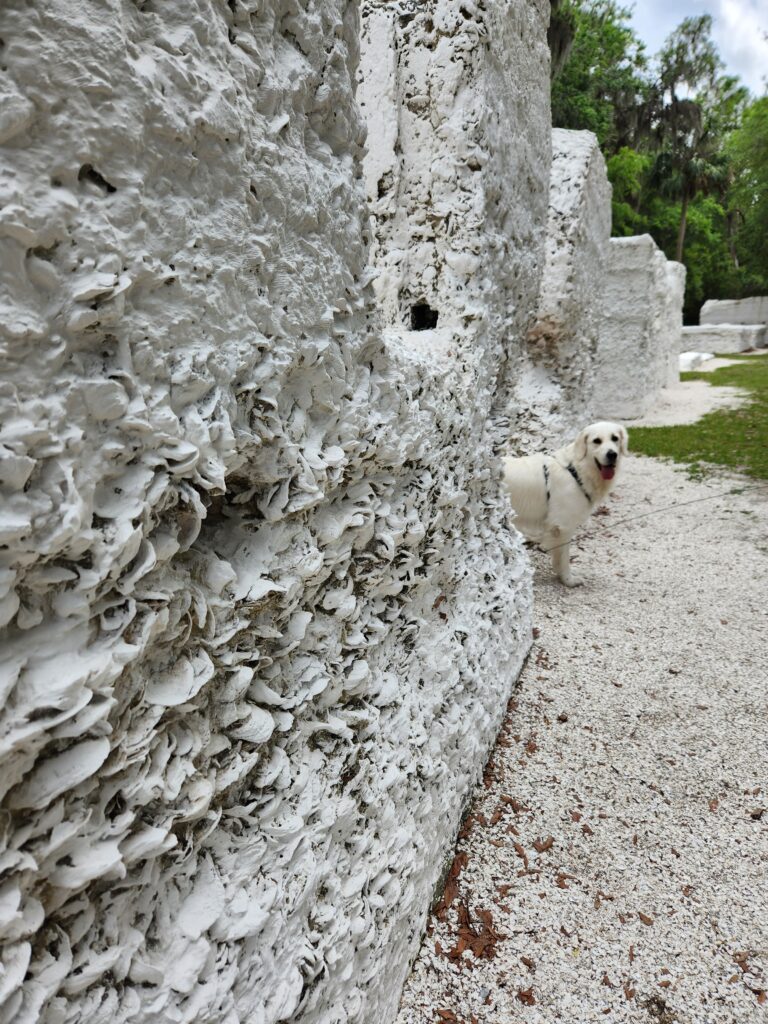
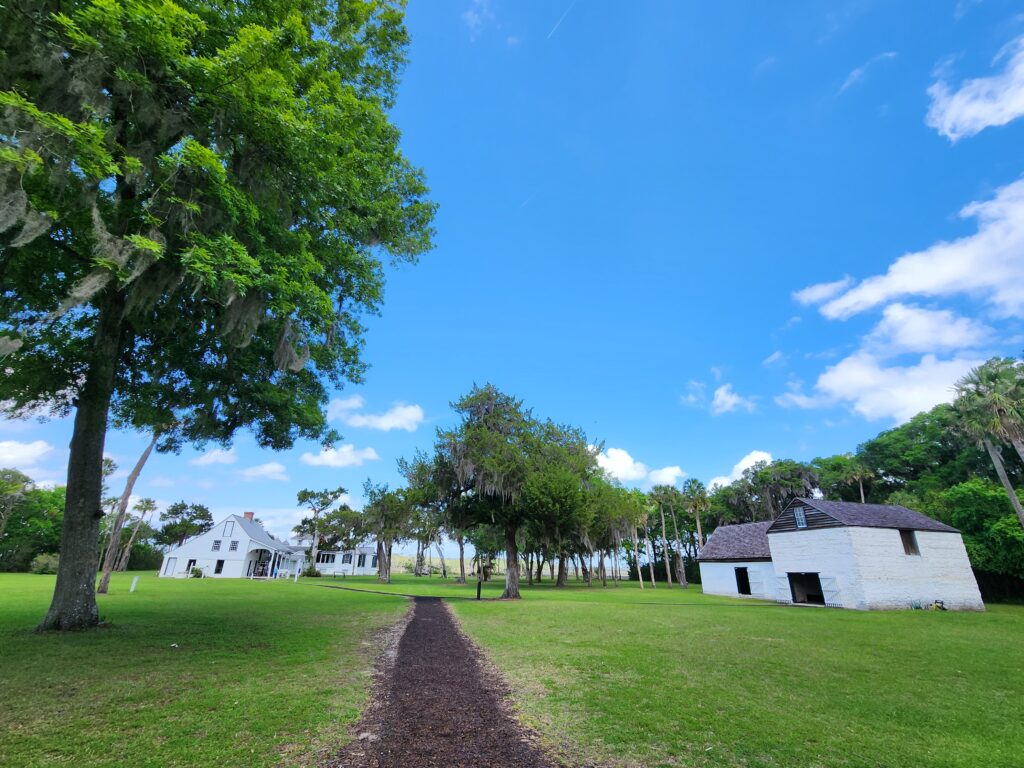
The Ribault Club, built in 1928 on Fort George Island, is a monument to the resort era where wealthy Northernerns spent their time cavorting while wintering in Florida. During the club’s height of success, it was renowned as a large house party, kind of a grown-up’s frat house, with tennis, hunting, fishing, yachting, drinking, and chest-beating.
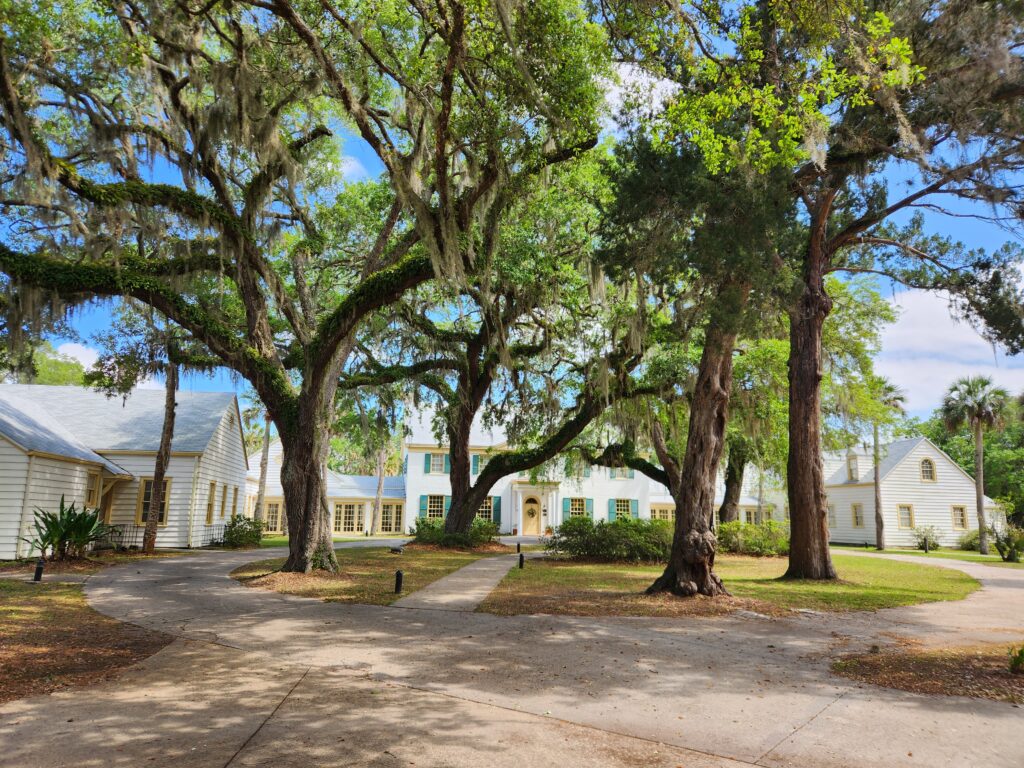
Solomon’s Castle – Ona, FL
On our way to St. Augustine from Sarasota, we stopped at Solomon’s Castle, a three-story home covered completely in recycled offset aluminum printing plates, and filled to the brim with the owner/builder’s own artwork, much of it made from things like old machinery, beer cans, oil drums and coat hangers. They do not allow pictures inside (dumb), but as you can imagine from the outside, it’s really … something else.
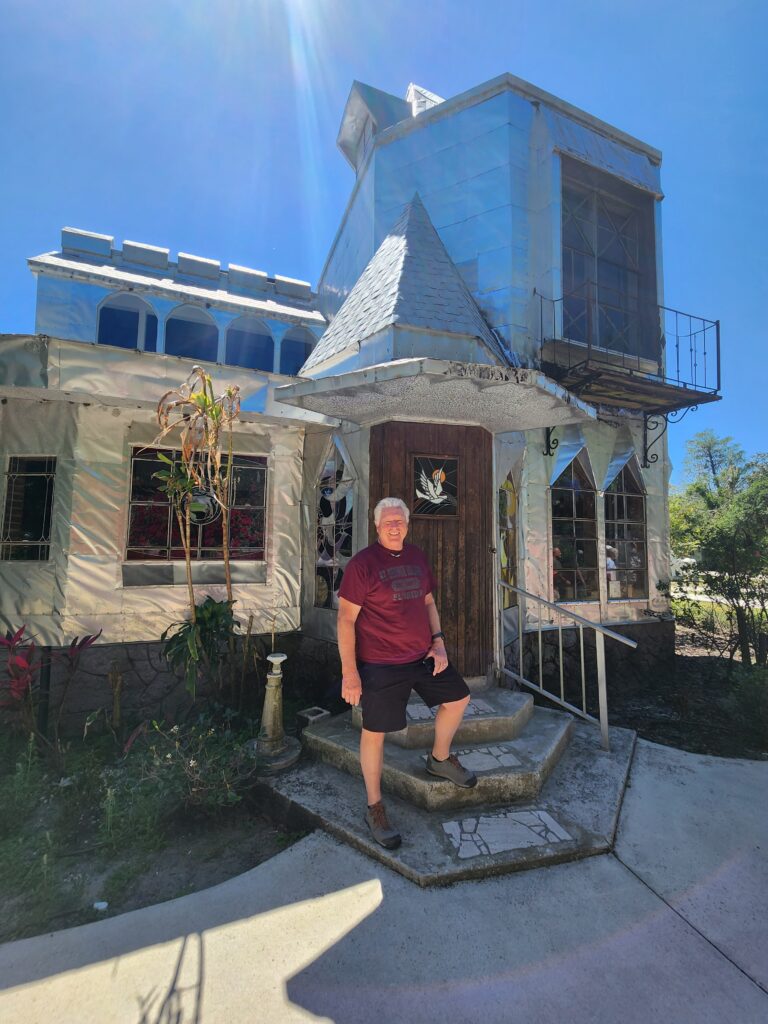
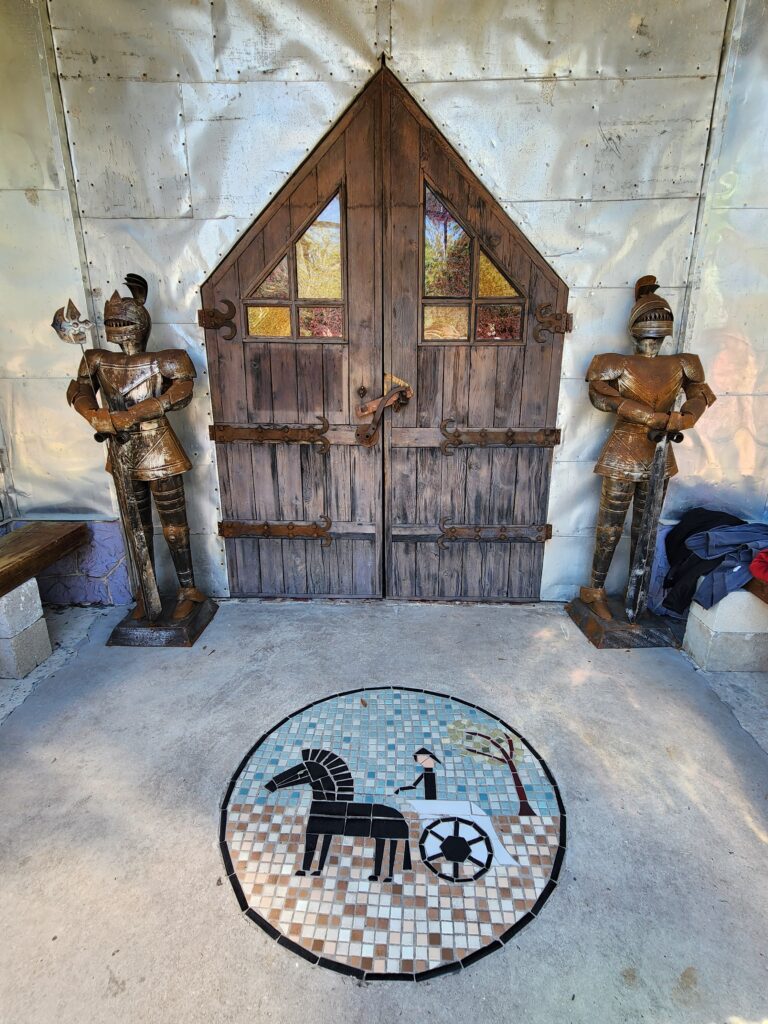
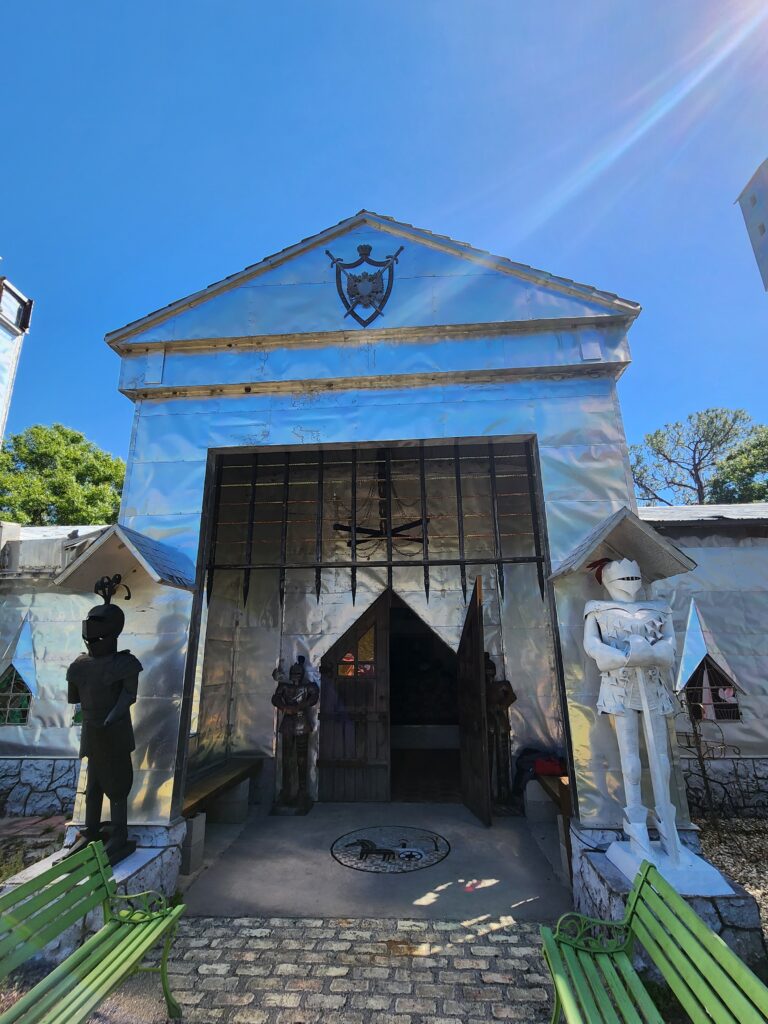

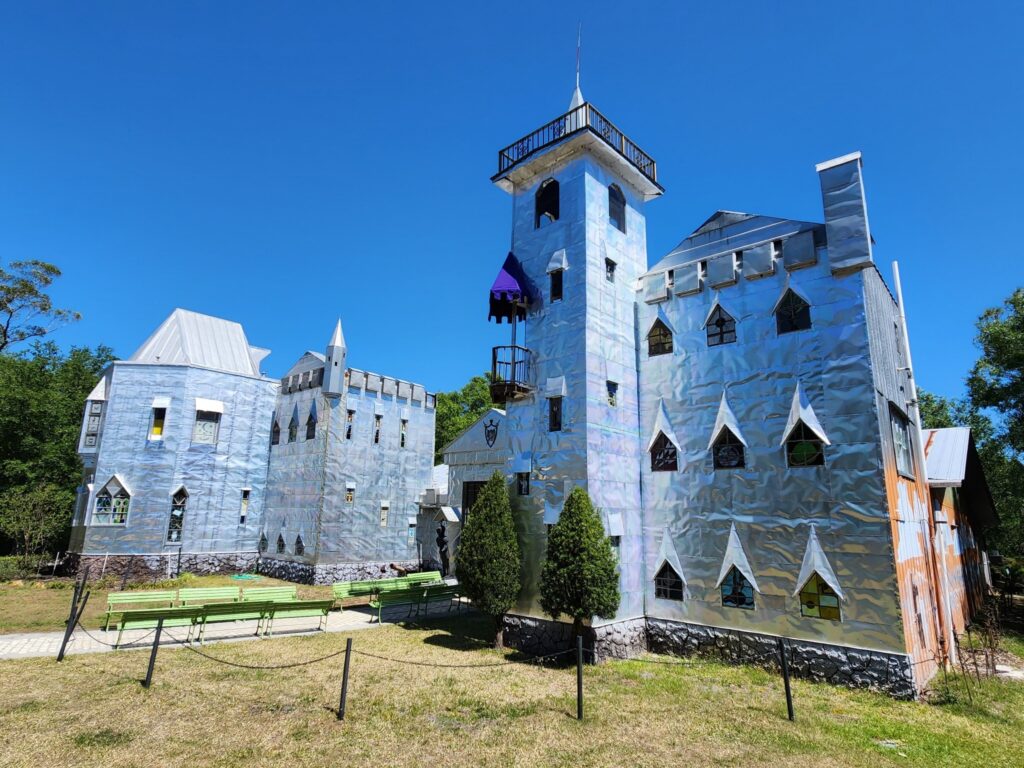
Also onsite, the Boat-In-The-Moat restaurant, because if you’ve got a pond on your Florida property, you might just as well build something in it. Cross the gangplank to this 60′ replica of the Santa Maria that Solomon made himself, and enjoy a homemade meal while you’re here.

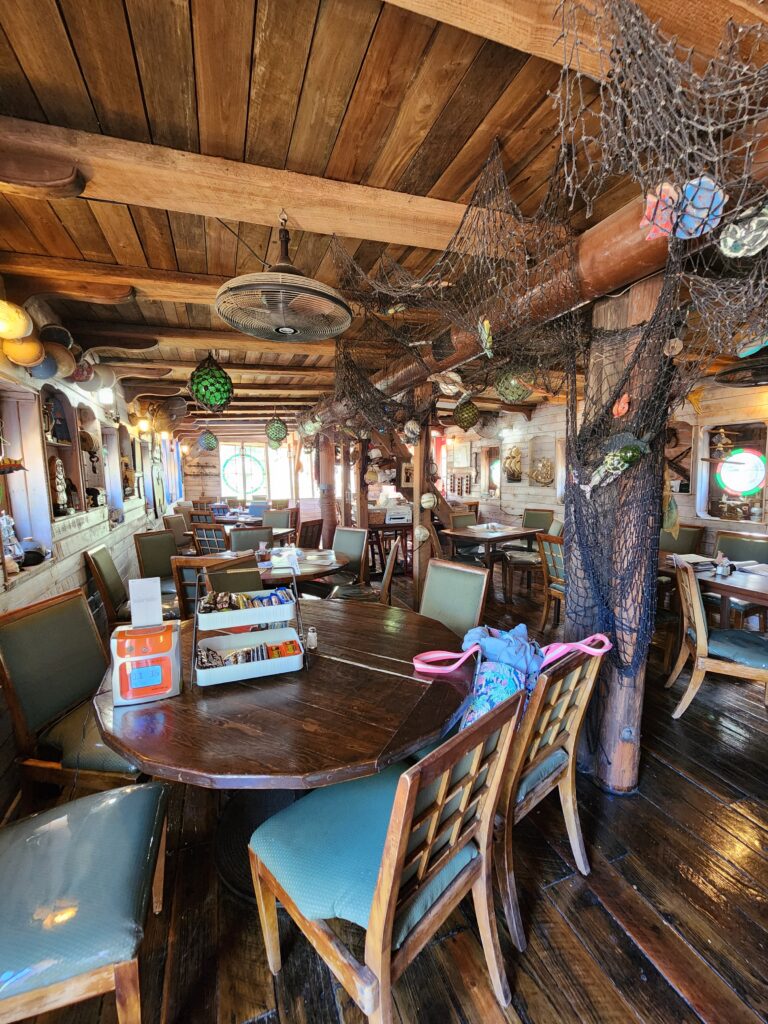

Bok Tower Gardens – Lake Wales, FL
Also between Sarasota and St. Augustine, Bok Tower Gardens offers acres of dog-friendly gardens of the famed landscape architect Frederick Law Olmsted, Jr., and a gorgeous on-site 1930’s Mediterranean style 20-room mansion known as El Retiro.

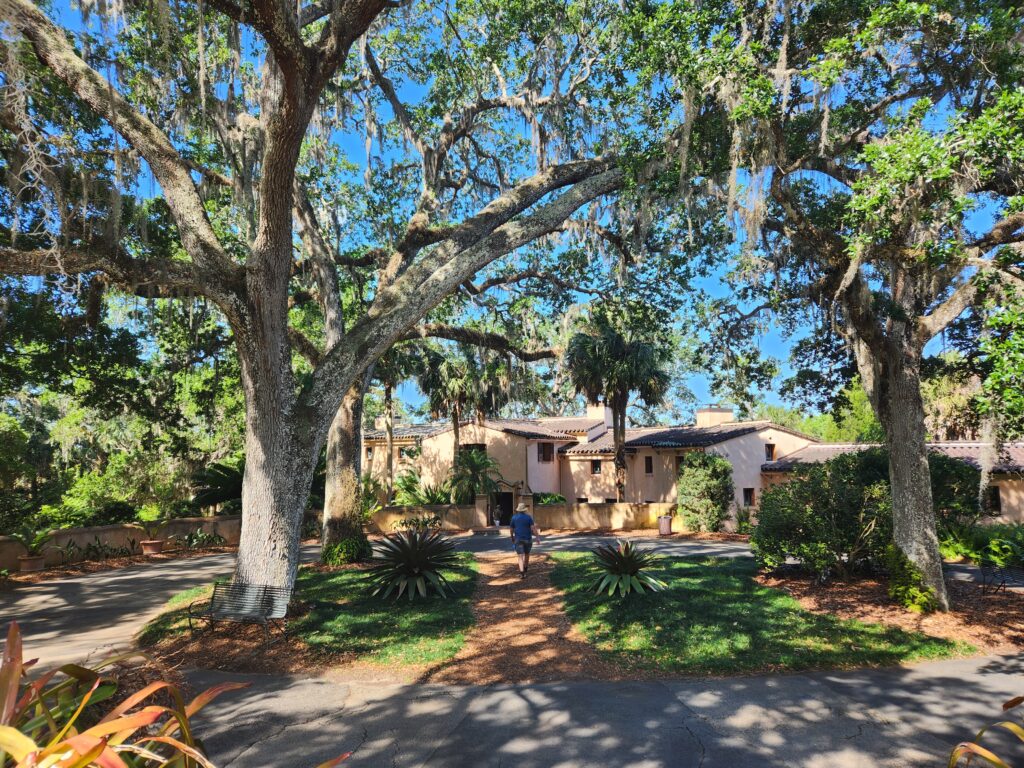

The “Bok” in Bok Tower Gardens refers to Edward Bok, award-winning author and editor of the Ladies Home Journal, who paid for the building of this place. The “tower” in Bok Tower Gardens refers to the unique 205′-tall carillon “Singing Tower.”

A carillon is an outdoor bell-based musical instrument played by carilloneers, which probably is a specific enough career that you won’t even find it on LinkedIn. This one has 60 bells and the beautiful music frequently floated throughout the gardens. Press play on the video below to hear 11 seconds of beauty.
Visible by walking around all four sides, the 205′-tall, deep pink Art Deco marble tower includes a huge sundial clock, stunning stained glass, and a brass door beneath which Bok is buried.
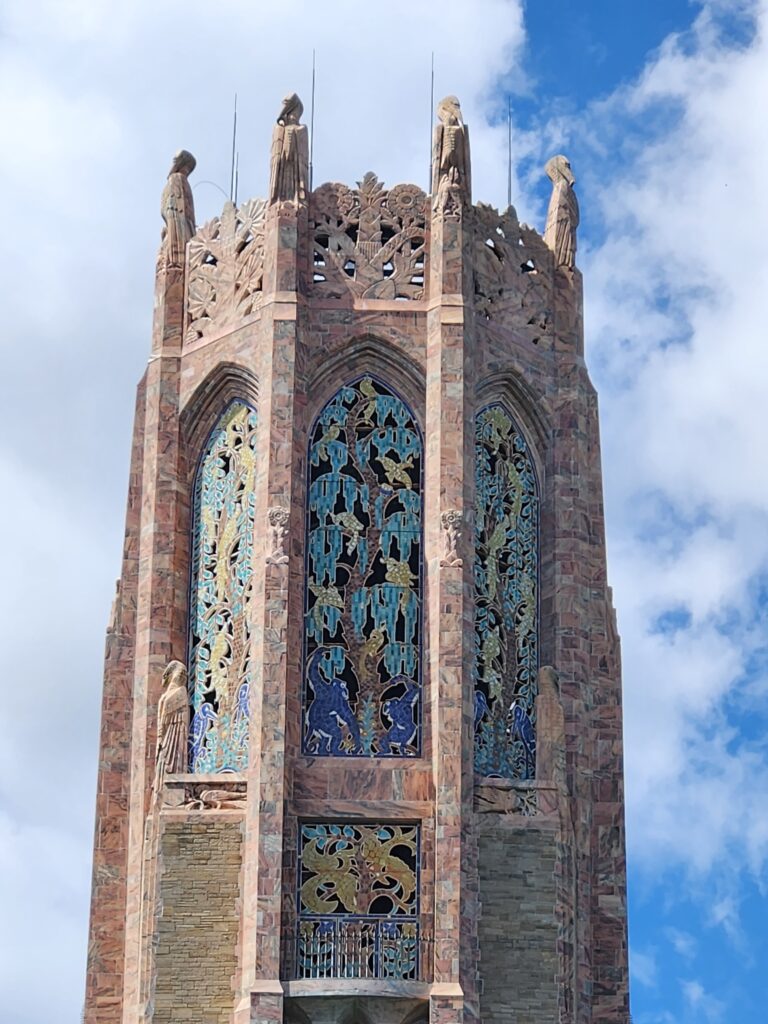



Our time in the oldest city of St. Augustine has ended, and soon our month in Florida, too! We will soon head north to two relatively undeveloped Georgia barrier islands, Jekyll Island and Tybee Island!


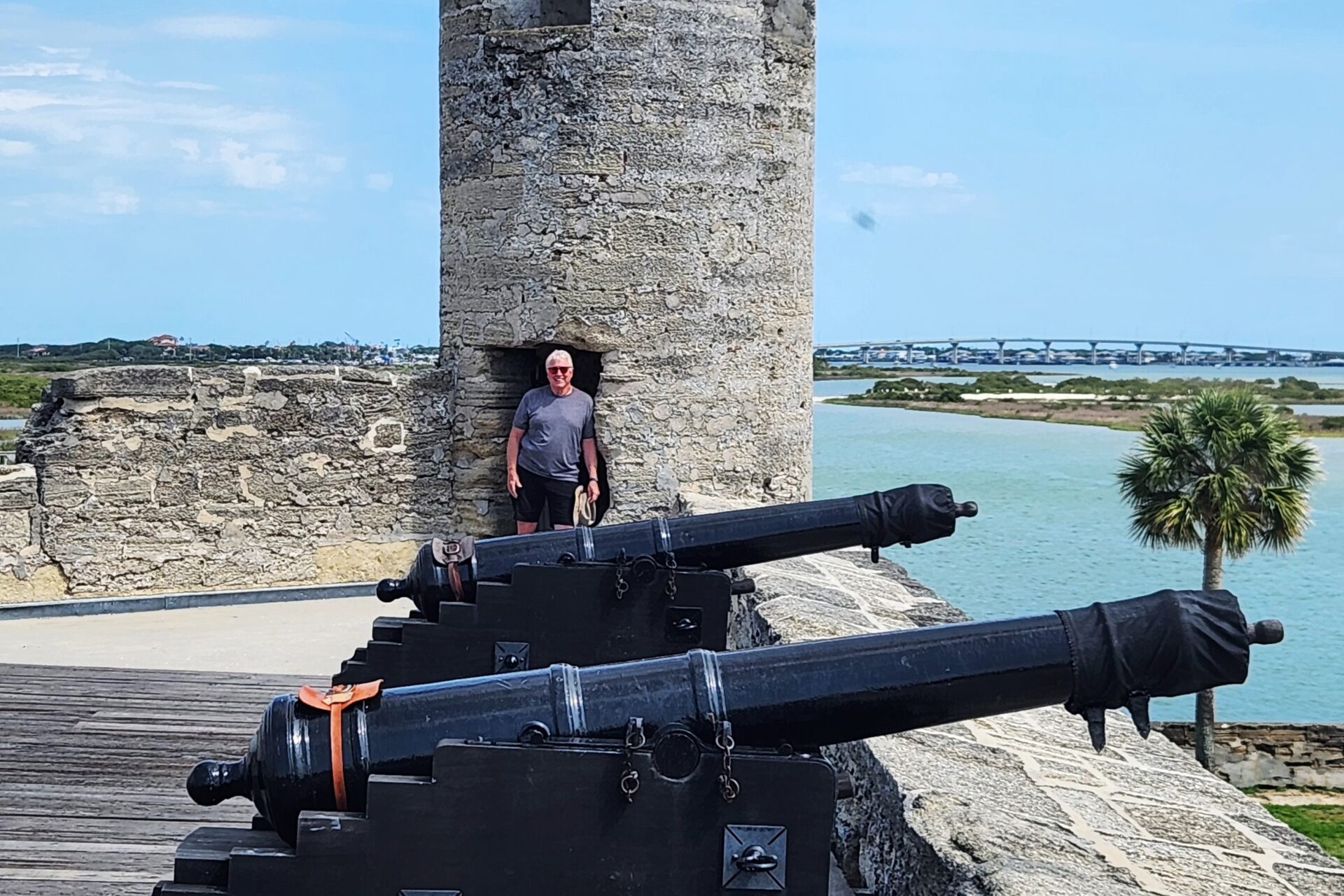

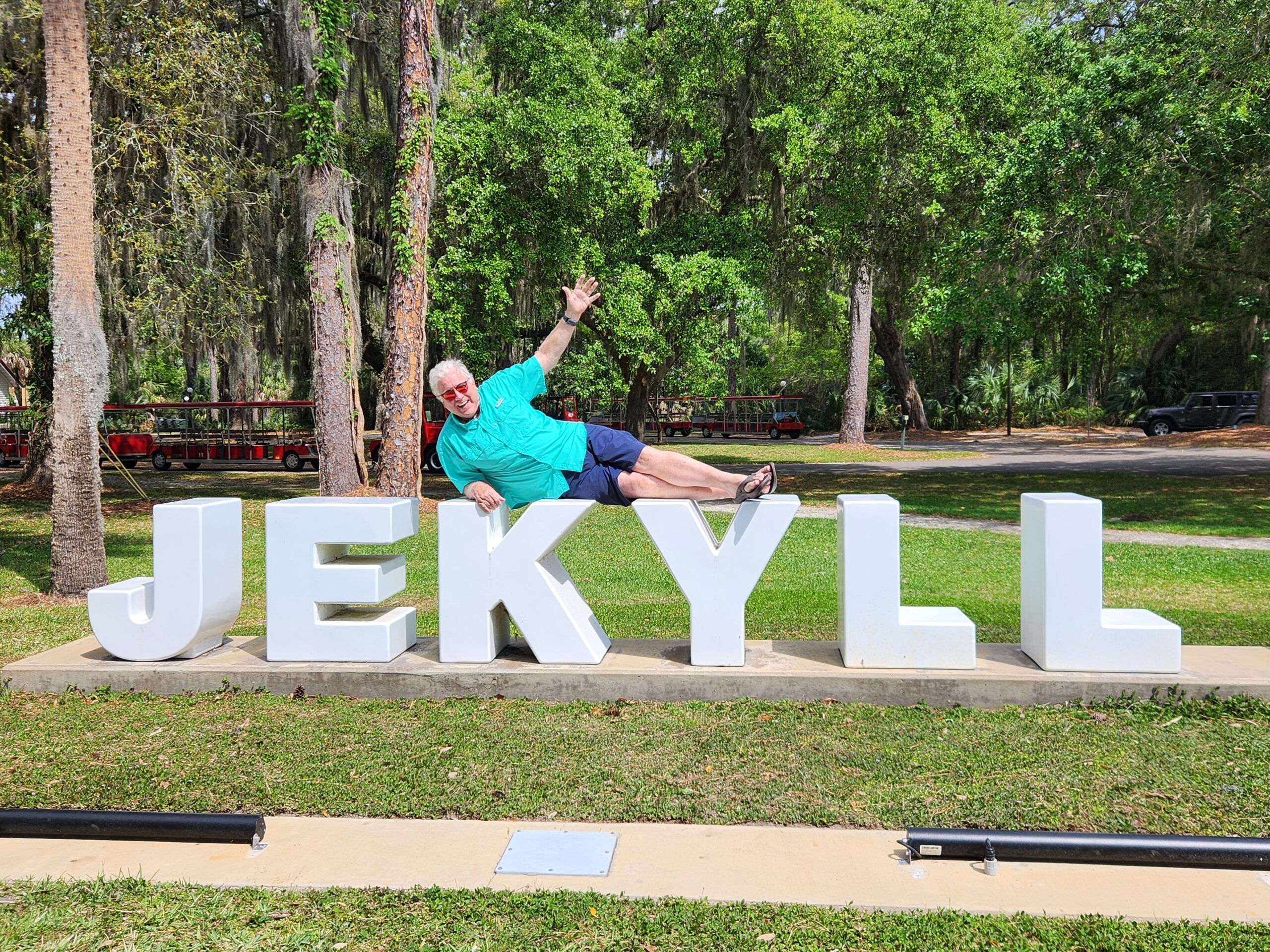

So, we’ve been to St. Augustine several times, but you just gave me a whole new list of things to explore! We have reservations for a week next January so I’ll be using your post as my guidebook. You really are a travel planner extraordinaire! And you are also an excellent (albeit slightly irreverent) history teacher, 😂😂
BTW, the only thing I think you missed in St. Augustine was the martini bar, but that’s probably a good thing, because I had the WORST hangover of my life after an evening there with Chapter 3 Travels. (And that was after one stupid martini.)
“Irreverent” ….. the best possible compliment I could ever receive! 🙂 Thank you sweetie!!! We did not see the martini bar, but looking at the maps we apparently walked by it several times! Dang it! NEXT TIME …. there is always a next time!